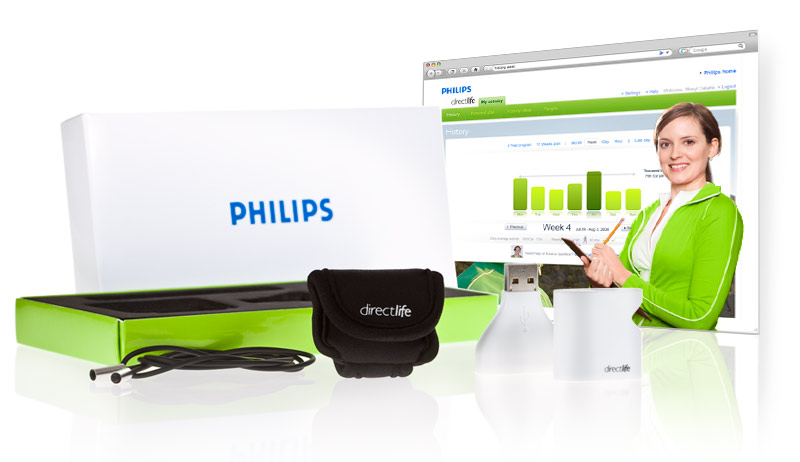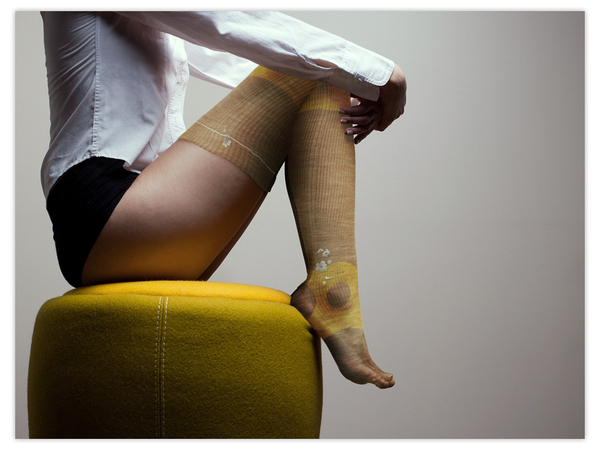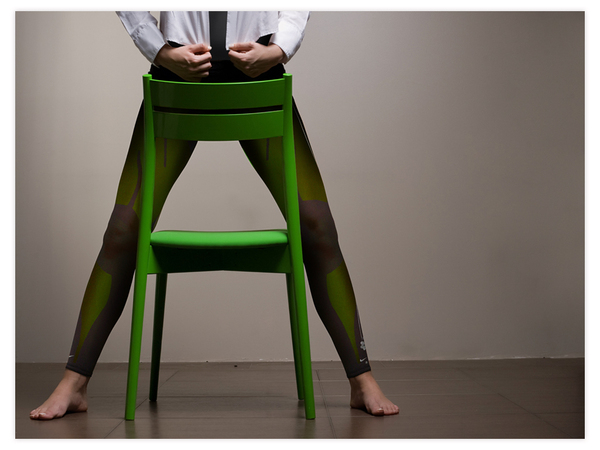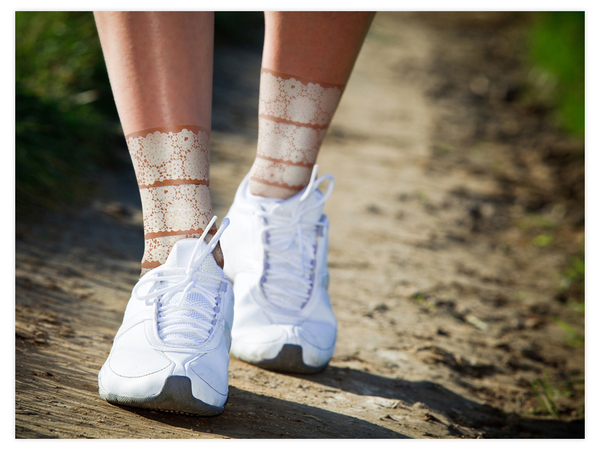Alas, you can leave that cumbersome power cord at home. Imagine charging your mobile phone anywhere you are simply by walking. University of Wisconsin-Madison engineering researchers Tom Krupenkin and J. Ashley Taylor have developed an in-shoe system that harvests energy by walking. Currently, this energy is lost as heat. With their technology, however, they claim that up to 20 watts of electricity could be generated, and stored in an incorporated rechargeable battery. Continue reading on Gizmag. Image from Gizmag.
An explosion of wearable fitness devices
There seems to be an explosion of fitness-related wearable devices hitting the market that take advantage of smaller, cheaper on-body sensing technology. From watches to smart jewelry, these pervasive devices are designed to help you keep track of your health by allowing you to measure and monitor a variety of bio-metric data. Here's a look at a few that have hit the market or plan to hit the market soon:

The Motorola KORE is, according to the trademark description Fusible spotted, an “electronic non medical portable physical activity monitor and fitness device” that could be used, in a similar way to Nike+, to track your exercise regime and give feedback on it.

NewYu is a similar connected fitness monitor that tracks all of your movement through a wearable device and allows you to set and manage goals through connected software.

Scosche Industry's myTrek sends workout vitals to your iPhone, starts shipping now for $130

Fitbit includes a wearable clip device and software that automatically tracks your fitness and sleep and lets you know if you got enough exercise and sleep for the day and how many calories you burned.

Muve’s Gruve (another wearable clip) measures your calorie burn and activity intensity throughout your day.

Switch2Health's Replay is a “Gaming for Health” watch that provides incentives to change behavior (and it's only $19.99).

Basis (previously PulseTracer) includes Basis Band that measures heart rate and other vital signs. They plan to allow third party developers to build apps that work with the device.

Adidas miCoach (also shown above) adidas' version of Nike+ now offers an Andriod app that includes real-time audible coaching for any sport.
 Philip's DirectLife, which has been on the market for a while, includes a devices that can be worn like a necklace. It tracks how much you move every day, you set goals and track your progress. You get suggestions about how to increase your activity levels at your own pace, and you even get a personal coach who can help you stay motivated.
Philip's DirectLife, which has been on the market for a while, includes a devices that can be worn like a necklace. It tracks how much you move every day, you set goals and track your progress. You get suggestions about how to increase your activity levels at your own pace, and you even get a personal coach who can help you stay motivated.
...and there are many many more ...
The new aesthetic of second-skin sports textiles
There's a growing trend in making high-performance textiles beautiful and more fashionable in the medical and sport sectors (see the related post on the aesthetics of personal medical devices) even if they are somewhat invisible to others. It's based on the psychologically that if you look good, you feel good therefore you perform better. Here's a look at a few second-skin fashionable performance textiles:
Above: Nike Women's Yoga Footstickers - There are many advantages of bare feet sporting: better motion control, more feeling in your feet and direct floor contact, etc. The footsticker improves the activity and keeps the barefoot feeling. The flexible material is like a second skin, the 'skin /touch sensation' is not disabled. The footsticker can give more grip, support and protection.
Women sport socks
Knitted pattern of different materials, for knee and ankle support

Women sport legging
Knitted pattern of different materials, to stimulate the blood flow to the muscles

Women sport tape
With lace pattern

Continue reading at Behance Network. Images from Behance Network (leggings), Behance Network (footwear)
Forget about the killer app, we need a killer OS
There's a lot of discussion around what the first wearable technology "killer app" will be, but first what we need at this early cusping time in the field is the killer operating system to run that killer app. Apple just might be the one to make it happen and I've got my eye on the Nano (among others). With hundreds of millions of iOS devices becoming ubiquitous among Apple users, turning the Nano into a wearable technology iOS seems like a good place to start. Perhaps that's what Apple's not-so-recent hire, wearable technology guru Richard W. DeVaul is up to these days.
The iPod nano is a tiny touchscreen with four small icons and simple apps, including FM radio, music app, photos app, voice notes and pedometer for NikePlus, one of the first wide-spread wearable technology solutions for casual runners. The size and power of this little device makes it a perfect contender for a wearable OS where the device is the hub that can potentially run smart garment "accessories". And with Scott Wilson's (MNML) LunaTik wristband accessories, it's even easier to wear.
But Apple's not the only company creating products in this space. Sony Ericsson has developed the small-scale Liveview with similar capabilities:
Another is the wearable WIMM Android platform, which is a full fledged, stand-alone device including Bluetooth AND Wifi, making it potentially easy to connect smart garment accessories to it: \
And perhaps Google has something up their sleeves with their recent $12.5 billion acquisition of Motorola Mobility that was announced this morning.
Now, if only Apple would introduce wireless capabilities to the Nano...
Read more opinions at 9to5Mac.
Electronic tattoos: soon to be a reality?
[gallery]Temporary tattoos may soon be more than a futuristic idea. Scientists from the University of Illinois at Urbana-Champaign, Northwestern University, Tufts University, the Institute of High Performance Computing in Singapore, and Dalian University of Technology in China, are collaborating on ultrathin, self-adhesive electronics that can be worn like a skin tattoo. The skin "stamp" could monitor heart rate, brain waves, and muscle activity without bulky equipment, conductive fluids, or messy glues. Perhaps now we can realize Lucy McRae's SkinTiles done a few years ago for Philips Design.
Continue reading on Ecouterre.com Images from Ecouterre.com, Philips Design
An emotional sensing necklace
[gallery]Philips Design is always exploring what our futures might look like through their dedicated "far-future" probes research that tracks trends and developments, which may evolve into mainstream issues that have a significant impact on business. The Probes generate insights from research in five main areas; politics, economic, culture, environments and technology futures. The results are quite evocative and generate a dialogue on the possibilities of our futures.
One of their design probes is VIBE - an emotional sensing necklace that combines conductive ink and textile sensors. The necklace can read multiple biometric signals of the wearer and communicates them to other devices and other wearers.
Most electronic communication is limited to very direct channels where we naturally exhibit many more signals or channel indirectly. This opens up a whole new universe of emotional applications, such as physical and emotional gaming, mind and stress control applications, as well as emotional telephony.
Continue reading on Philips Design. Images from Philips Design.